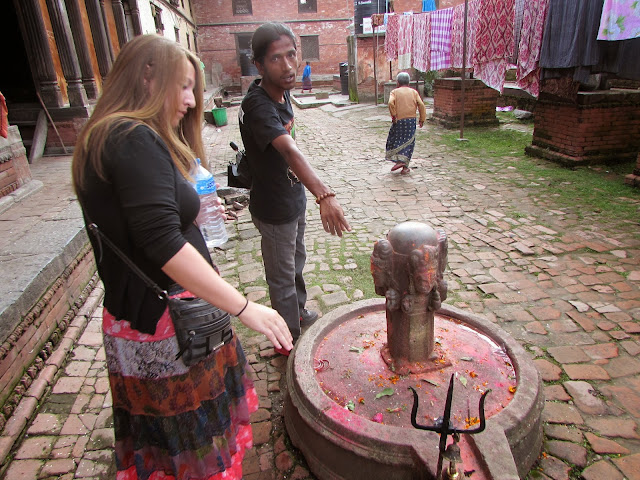
Having thoroughly explored the labyrinthine streets of Thamel and the beautiful palaces of Durbar Square, Angela and I had a few more places to visit in Kathmandu before leaving for the countryside. First, we went to Pashupati, Nepal's most sacred Hindu shrine, where local funerals and cremations take place along the Bagmati River. Then we went to magnificent Boudhanath, one of the largest stupas in the world. Finally, we visited the Garden of Dreams, a European-style garden providing a peaceful respite from the chaos of Kathmandu.
 |
| We'd tried a lot of Nepali food during our first few days in Kathmandu, and decided to try some of its international fare. For breakfast, we went to a Korean restaurant called 경복궁 or Gyeongbokgung, and ate some samgyeopsal (barbecued pork). It was our first Korean meal in around six months, and while it wasn't the same as we'd experienced in Korea, it was still pretty damn good, especially the kimchi. |
 |
| Ah, just like the old days in Seoul. |
 |
| We took a taxi to Pashupati, which was fronted by this colourful market. |
 |
| At one point, a monkey snuck across the road and stole a mango from a market stall. The lady working there scared it away with a stick. |
 |
| Approaching the temple. |
 |
| Residential buildings near the temple. |
 |
| Not sure if this man was a baba (priest) or some other Hindu personage, but whatever the case, he was easily the coolest looking guy around. |
 |
| Pashupati rests on the banks of the Bagmati, a holy river that runs through the Kathmandu Valley, later joining the river Koshi, which in turn joins the Ganges in India. |
 |
| Along the river are these funeral pyres where bodies are cremated before being pushed into the river. |
 |
| Some soldiers - possibly Gurkhas? - march along the riverbank. |
 |
| The funeral pyres are maintained by local Brahmins, who belong to the caste of priests, artists, technicians, and teachers. |
 |
| We received a Hindu blessing inside a small Karma-Sutra shrine on the temple grounds. |
 |
| Looking up the river. |
 |
| A deceased Hindu is brought down to the river. |
 |
| There were pensive onlookers watching the proceedings while family members weeped and mourned together. |
 |
| According to Hindu tradition, before being cremated the body must be washed with holy water. |
 |
| A lady tosses a coin into the red stupa for good luck. |
 |
| Near the back of the temple were these old houses built into the cliffs. These were the homes of local babas or priests. |
 |
| Looking towards the Golden Temple of Pashupati. |
 |
| Leaving the temple grounds. |
 |
| We also visited a nearby government home for elderly people. |
 |
| We returned to the river to watch some more cremations. |
 |
| As well as Hindu funerals, there are also Buddhist funeral ceremonies like this one. |
 |
| After leaving Pashupati, we headed to Boudhanath, a magnificent Buddhist stupa. |
 |
| People walk around the stupa in a clockwise motion for good luck. |
 |
| A golden Buddhist temple stands opposite the stupa. |
Click here to continue the adventure in Part 2!















































No comments:
Post a Comment